
Kurtis Greene
August 22, 2022
Spaysky Fine Art Gallery LLC is located on a tree lined residential street in southwest Detroit. To enter the gallery, you must walk between houses to the rear of the duplex that it resides in. You enter through the garden. Upon entering the gallery, artist Alexandra Virginia Martin presents us with a problem. There are two hanging sculptures located just inside the door. These sculptures block our passage and our view of the rest of the space. As viewers we must choose whether to contort our bodies to maneuver between these two hovering green latex vessels or to pass through by committing the cardinal sin of art viewing and touch the art. I opted to be a studious art viewer and keep my hands to myself. I was told later by Martin that she encouraged everyone to touch the work.
The two sculptures that administer this personality test could be siblings. They are both peapod-like forms made from bright green latex with a steel armature. One is filled with a sack of air giving the whole form plump, convex sides while the other is hollow and subject to gravity. These objects are suspended from the ceiling at around chest height. It should be noted that the latex used in the making of these sculptures has its roots in fetish wear. While I don’t believe that this work has anything to do with fetish wear or the community that wears it, it does seem that they and the artist are using it to achieve a similar effect. This material has the feel of skin. It is a cold, dead, unfeeling skin but it is skin, nonetheless. This synthetic skin gives these inanimate, organic forms a quality of living and breathing.

Once you’ve figured out how to maneuver past these two sculptures the rest of the gallery opens up to reveal a unique ecosystem. The first work we encounter is a third peapod like form although this one is significantly larger. While the first two works revealed their interiors through open vertical sides, this third one has its top open like a bathtub. Also like a bathtub there is a small amount of water collected in the bottom of this form. The weight of the water stretches the latex, pulling the rest of the skin down toward a bulbous shape like a breast or a butt cheek. At first glance these sculptures appear to be fabricated with the planning and precision of an architectural model but upon closer inspection the hand of the artist becomes visible. Slightly imperfect seams, cuts and folds to accommodate the curves of the armature and the residue of skin oils and glue reveal the direct method of making that has gone into these works. There is a playful freedom in these works that only comes from improvising and experimenting with material and form.
Beyond that is a very shallow rectangular pool. This work, like the others, is a metal armature with a latex skin. In the water are bits of organic debris which, according to the materials list, is turmeric. I would venture a guess that, as alive as this work is with organic matter, (decaying and/or growing) there are likely many more substances in that water depending on when you saw this show. At the far corner of the pool, gently resting on the edge, is a piece of spectacularly gnarled wood. This wood is accompanied by a small still life of what appears to be citrus rind.
Next is a slim, hanging, tube-like form also made from latex. This work is dyed a deep violet and almost appears as a shadow from a distance. About ¾ the way up this tube there is a small slit. Jammed in that opening are two stones that distort and stretch the shape of the tube. At any moment this object may rupture and spill its contents on the floor. This quiet tension is amplified by its installation in a far corner of the gallery.
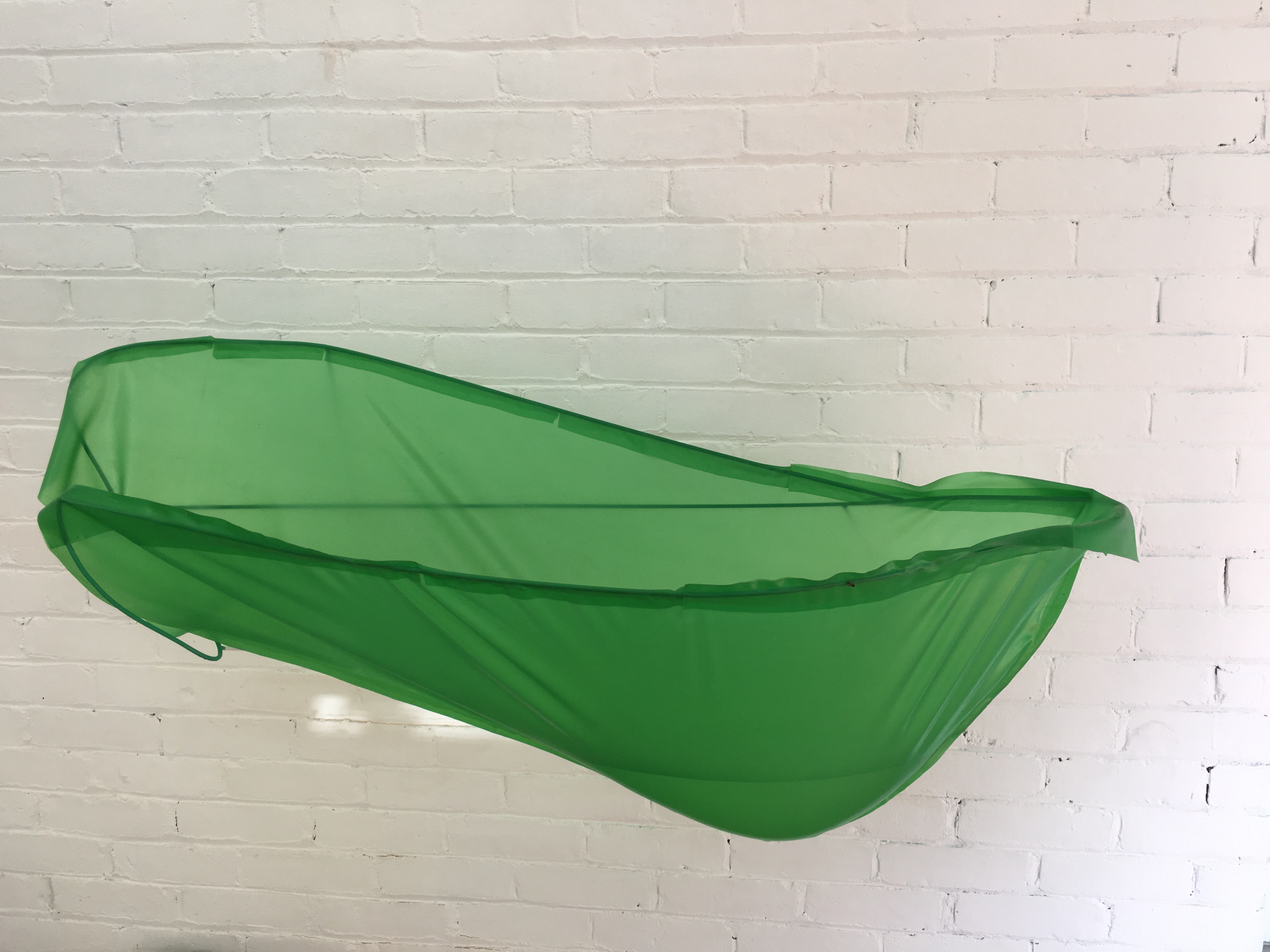

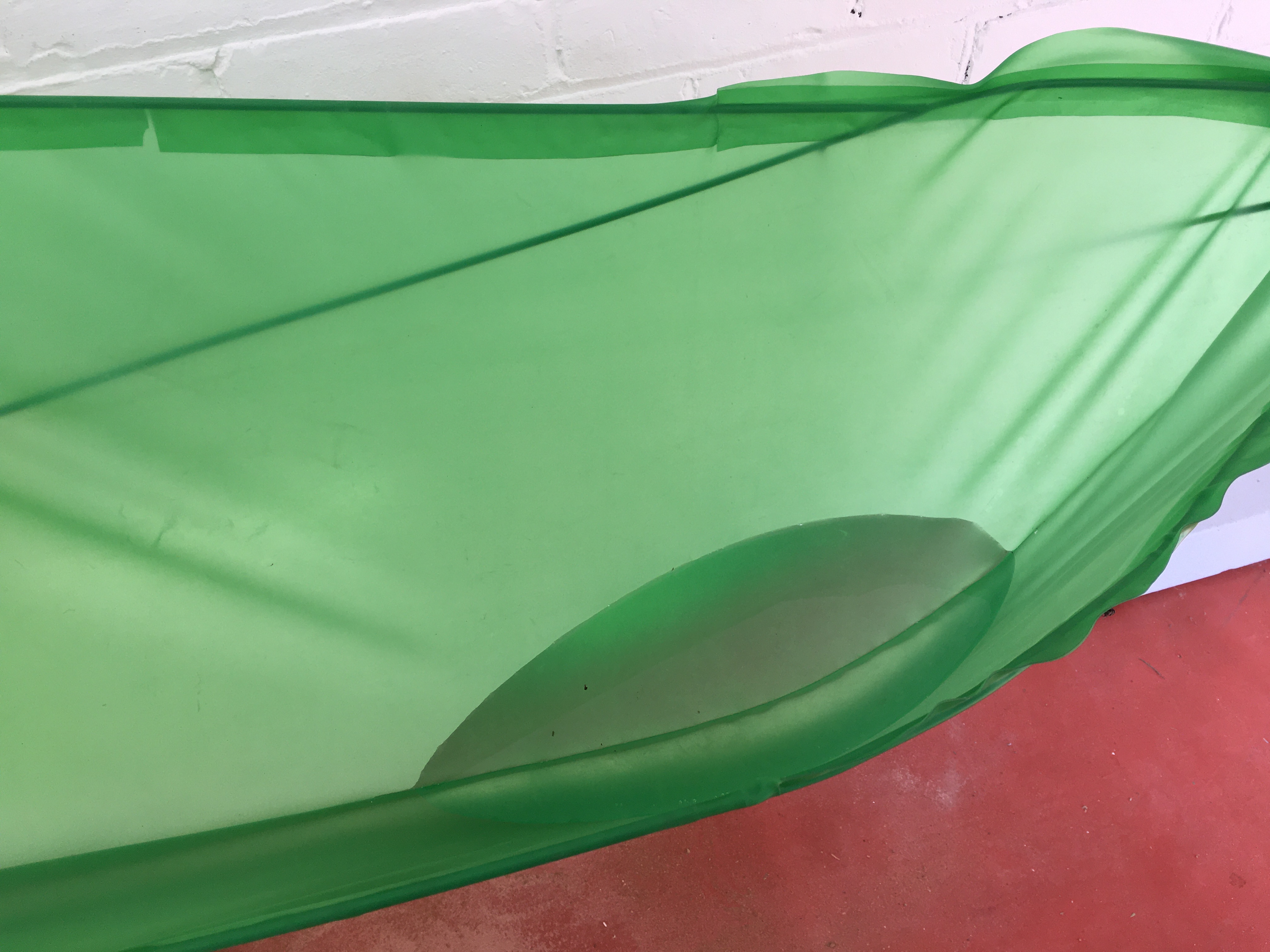
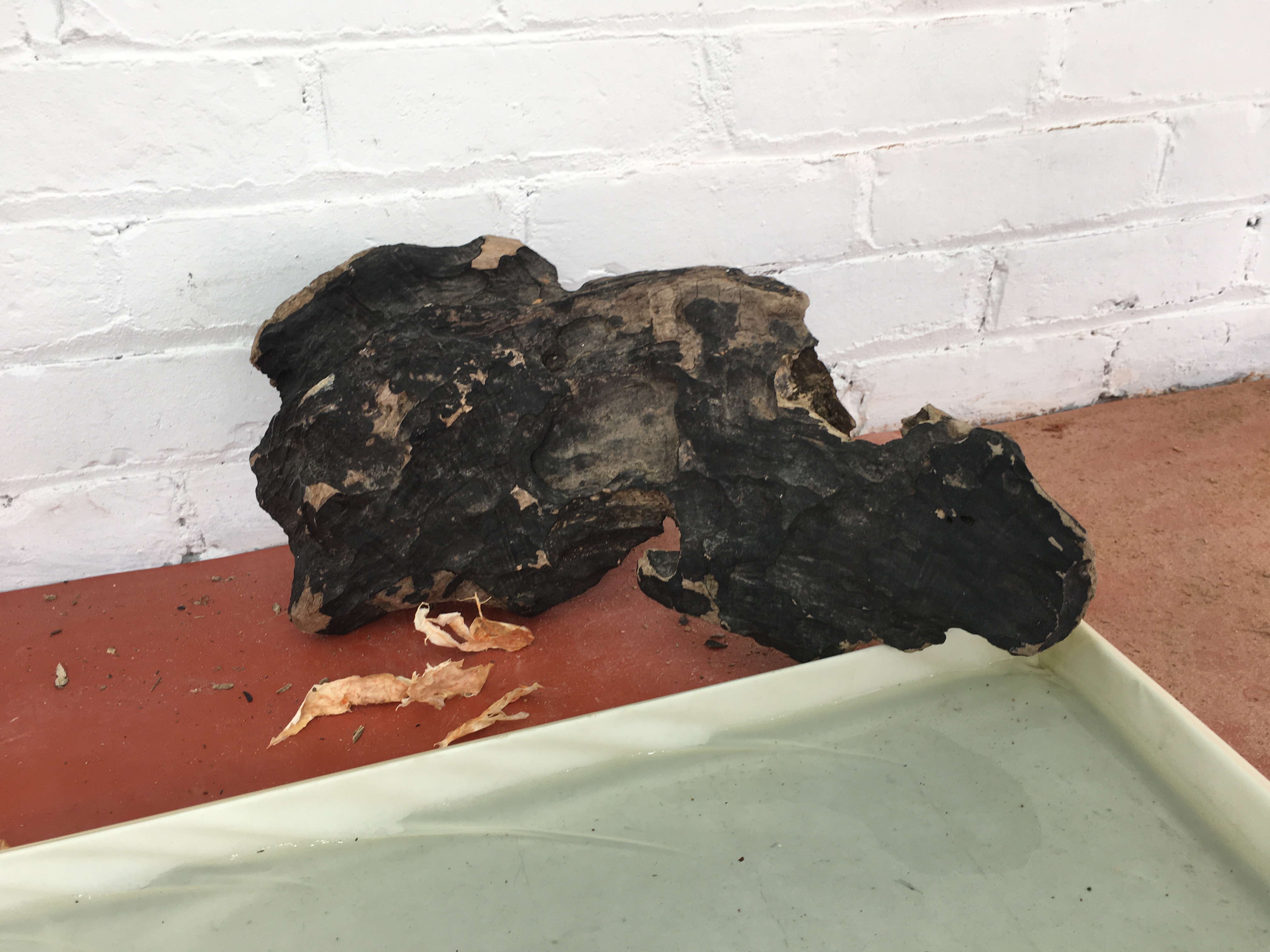
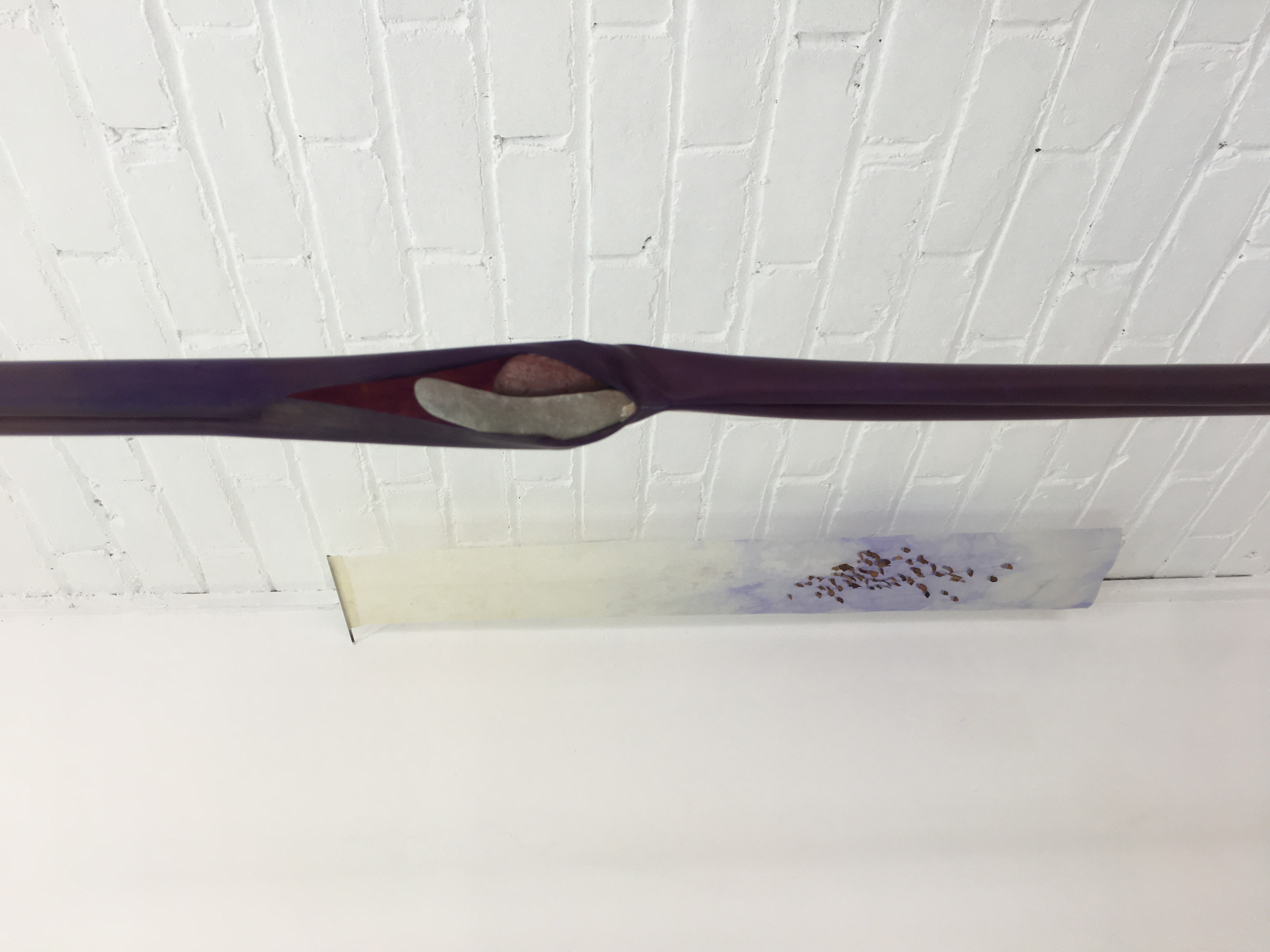
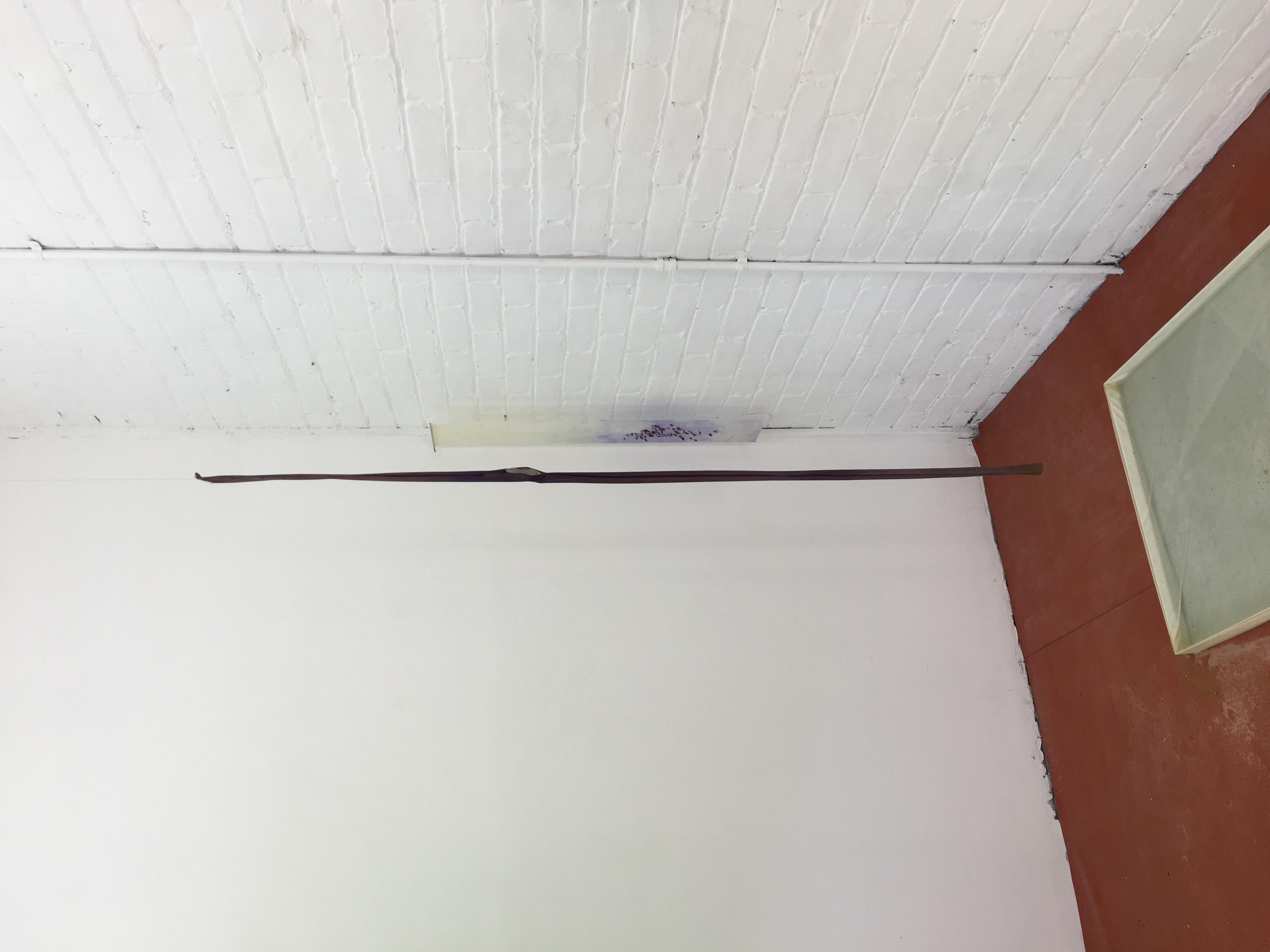
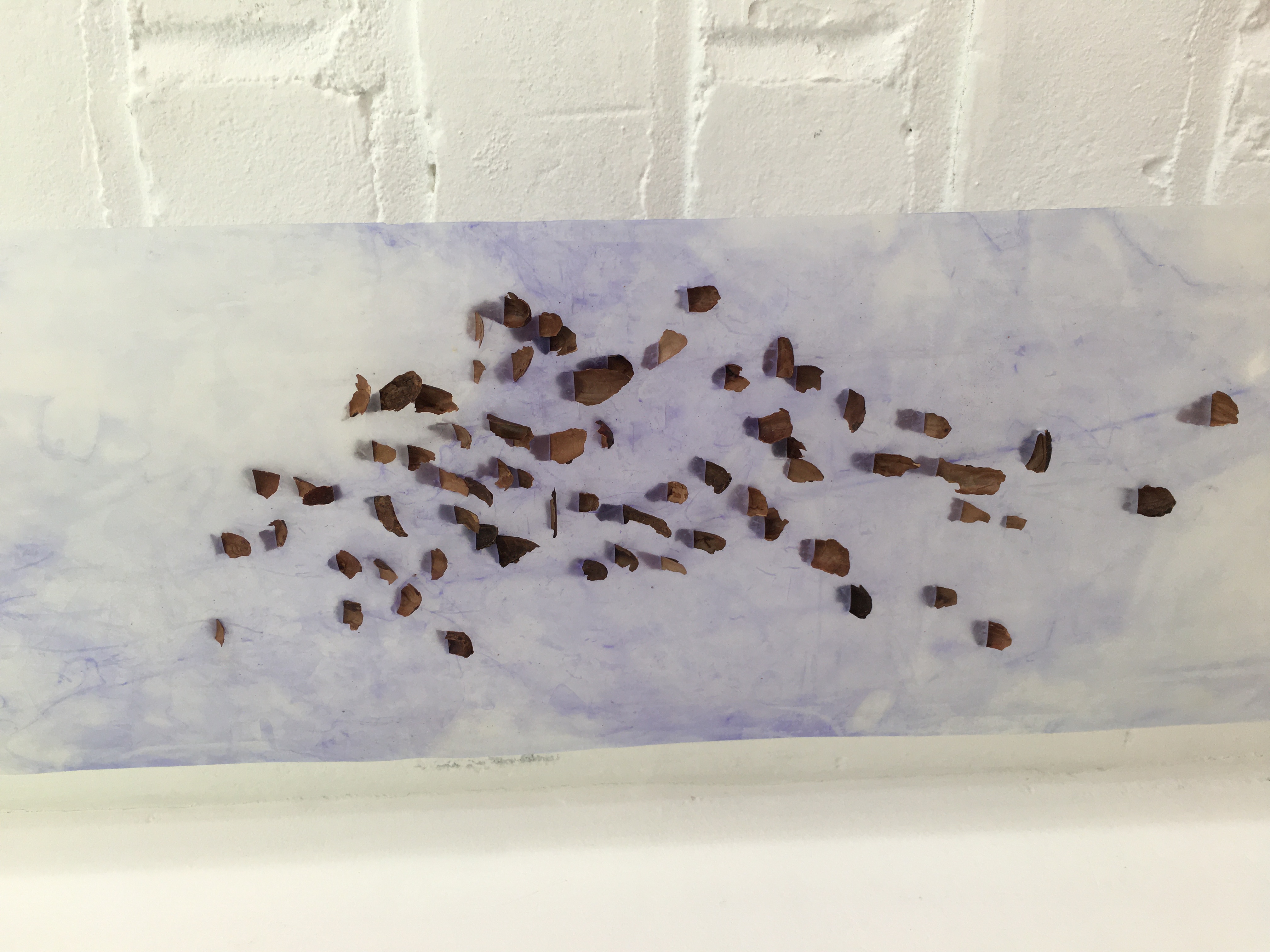
Even further into this end of the gallery is an exquisite work that hangs like a tapestry. Again, this piece is made of the same traffic light green latex. Being installed near a window shows off the translucent quality of this material. This piece seems to glow from somewhere deep inside even though it is paper thin. Imbedded through this piece are bits of grapefruit rind.
This fibrous material may be dried and decaying in front of our eyes but the space that holds it is alive with the scent of grapefruit. This is due to the artist zesting the citrus fruit in the gallery and sprinkling it in corners, on cobwebs and generously dusting it onto the floor. This zest was also accompanied by the scent of burnt cinnamon. The combination of these materials fills the gallery with a bright earthy scent that wonderfully contrasts the synthetic materials of the sculptures.


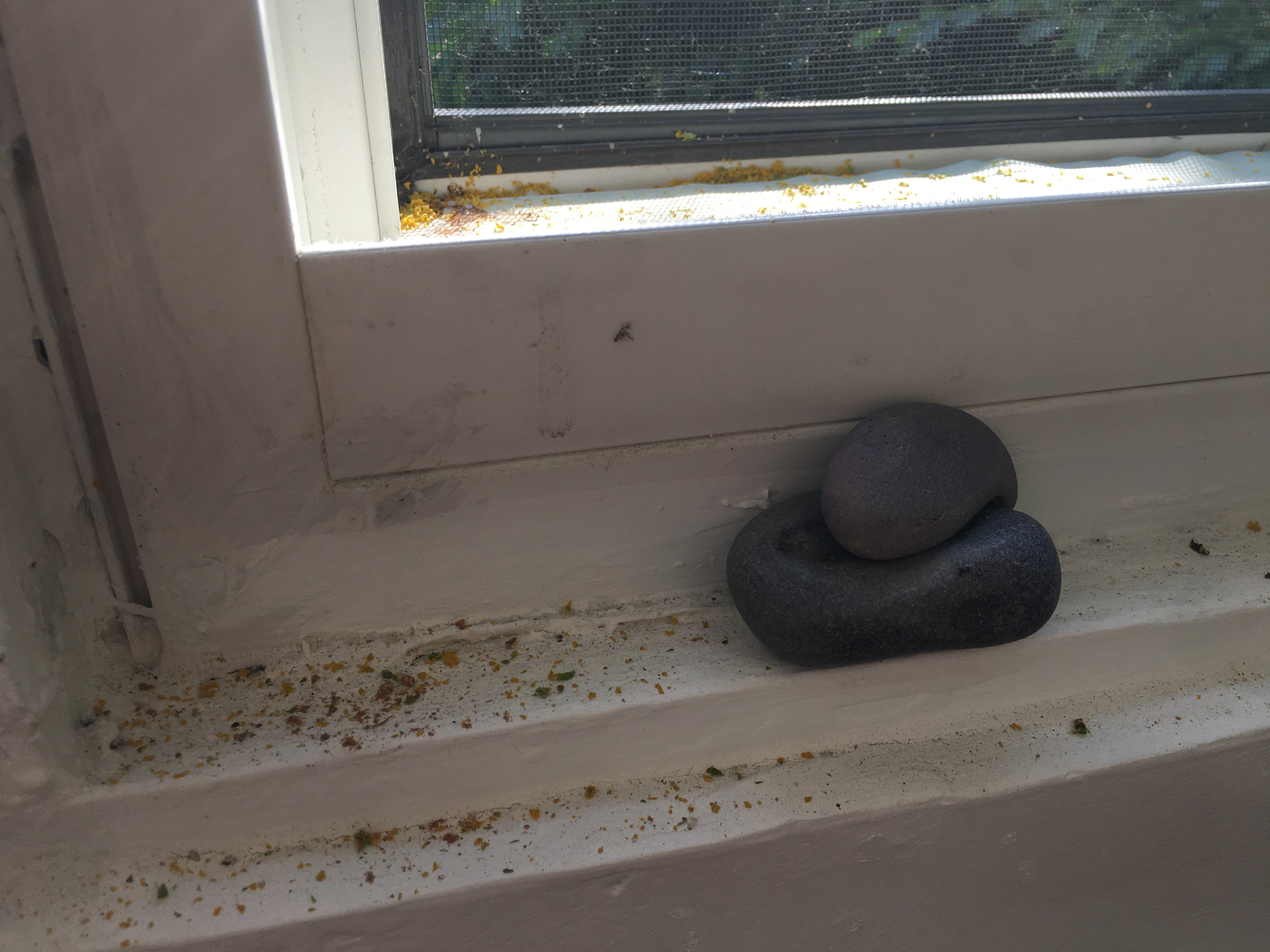
The addition of scent is not the only unique way that Martin has activated the space. The floor of the gallery has been laid out with long sheets of rust colored latex. On top of this latex has been sprinkled all types of organic matter including sand, soil, cinnamon, grapefruit zest, cobwebs and whatever else may have hitched a ride on viewers shoes. This activation of the floor is so important because it creates a continuous tactile connection with the viewer. At no point while one is viewing this work are they not also touching it, feeling it, constantly reacting to it in new visceral ways.
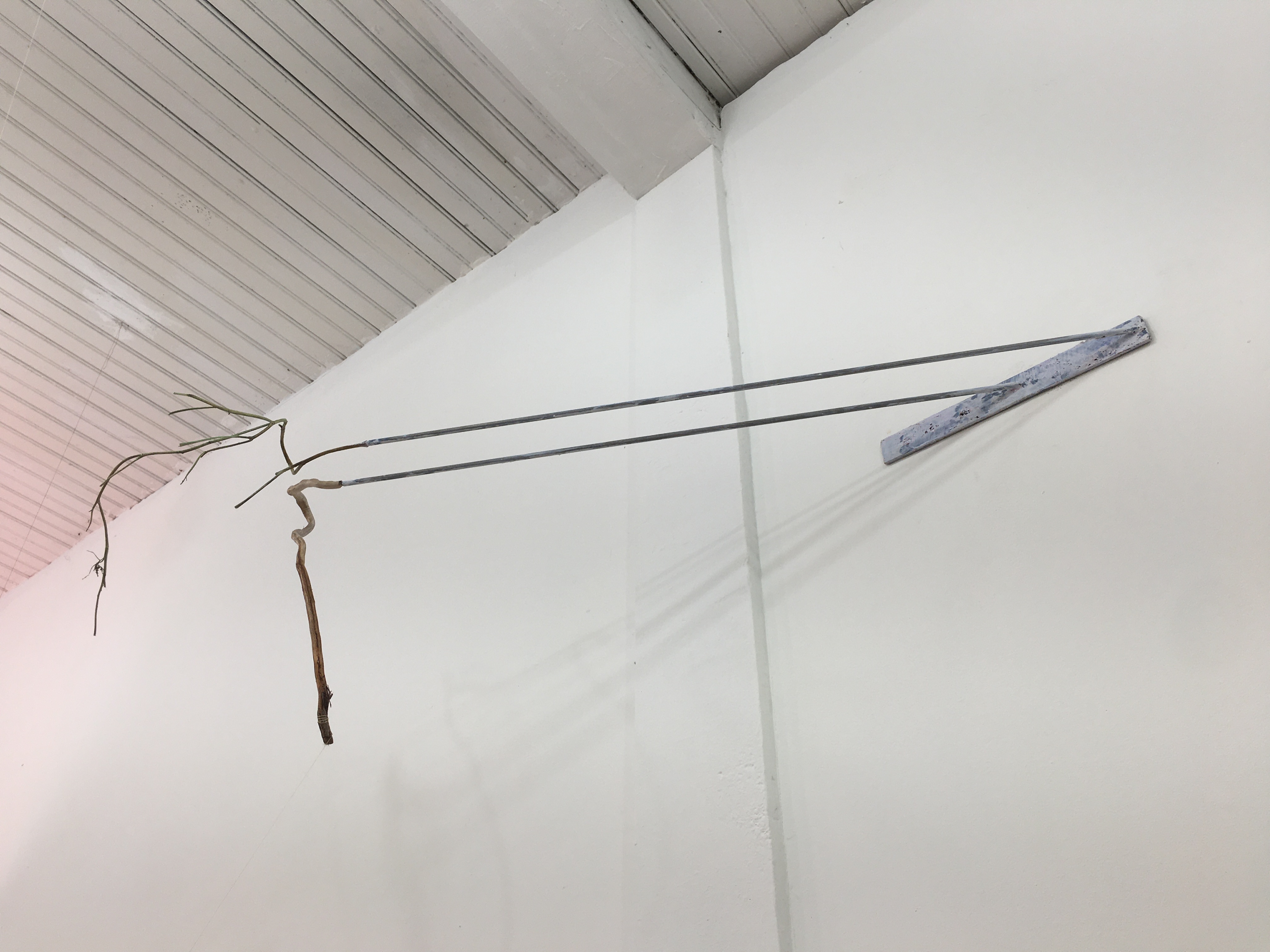
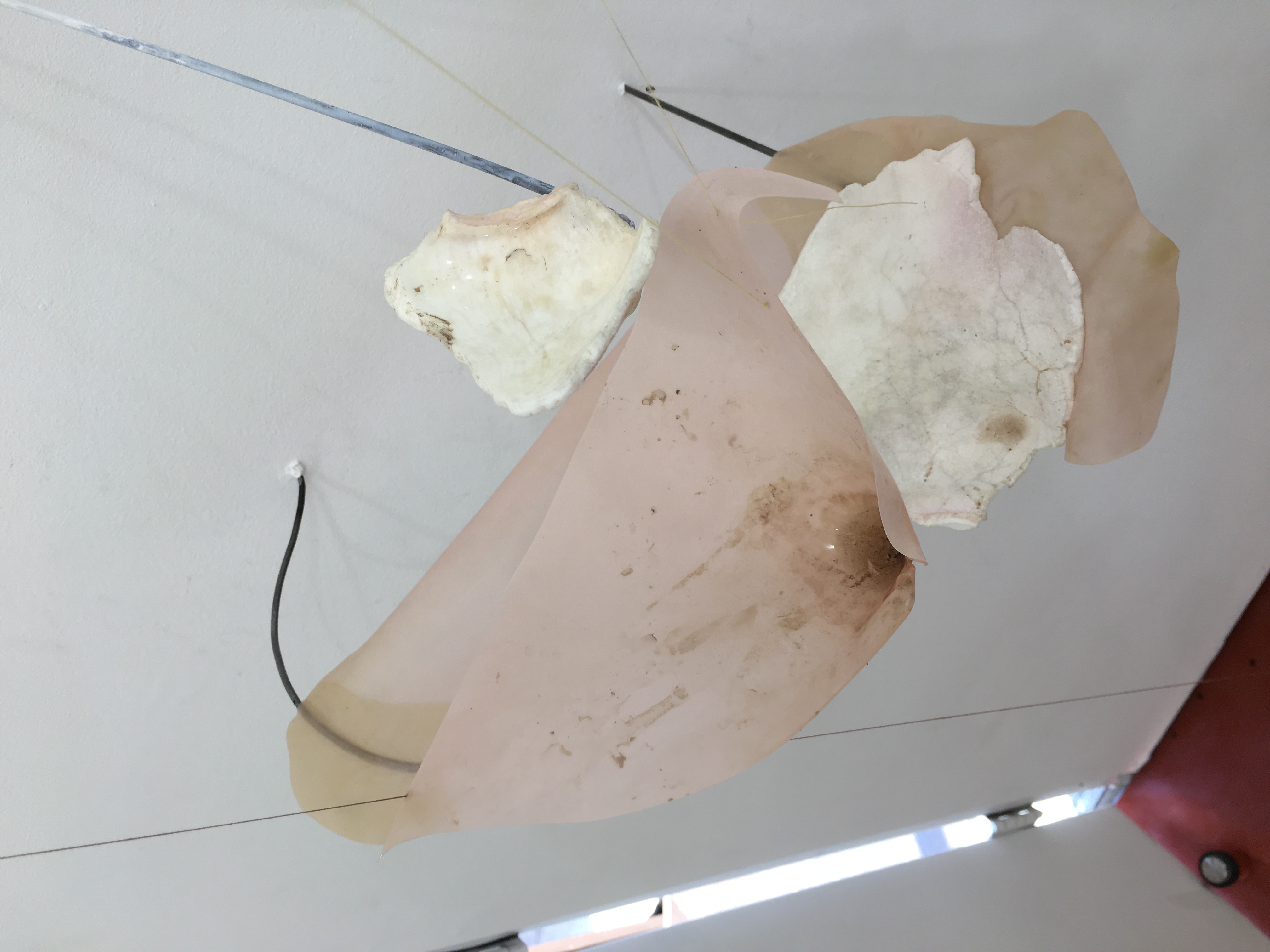
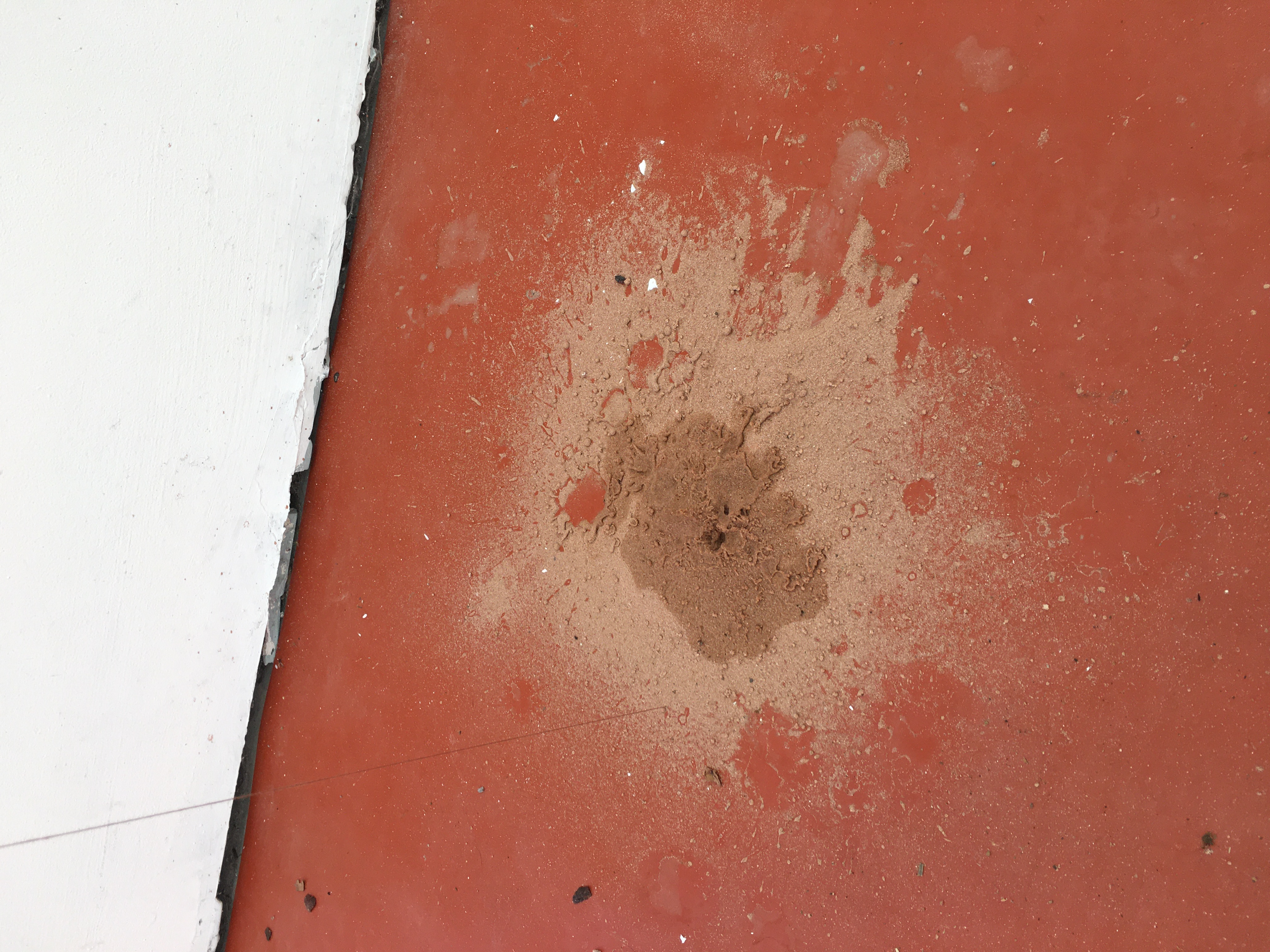
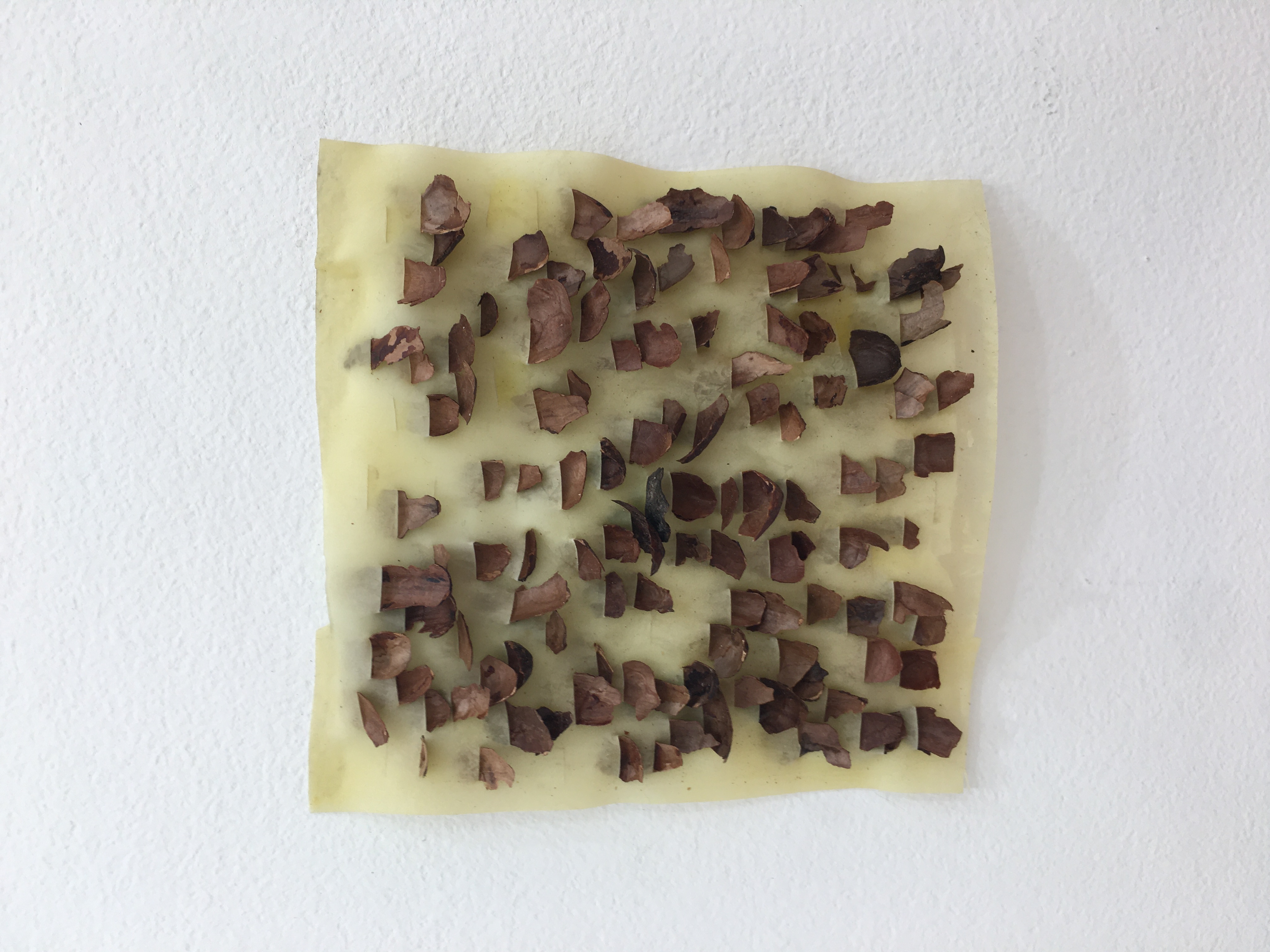
There is a suspension that is happening in this work. Where organic matter is embedded into synthetic material, where water has collected with no natural way to drain or where our bodies are imposed upon by forms that look and feel organic but in no way are, we are suspended in time. This is not human time but ecological time. In this space, in this time there is a transition happening. Things are transitioning from living to decaying, from organic to synthetic, from protected to exposed. This transition is not without a fight. The organic is not quite dead, but the synthetic has yet to fully smother.
The viewers of this show are forced to make a choice upon entering. The options are tread lightly, respect your surroundings and limit your indulgence to what the environment will bear or honor your own self-serving desire for comfort and disregard the delicate ecosystem that is right in front of you. This is possibly the most pressing question that we currently face in our own human time.